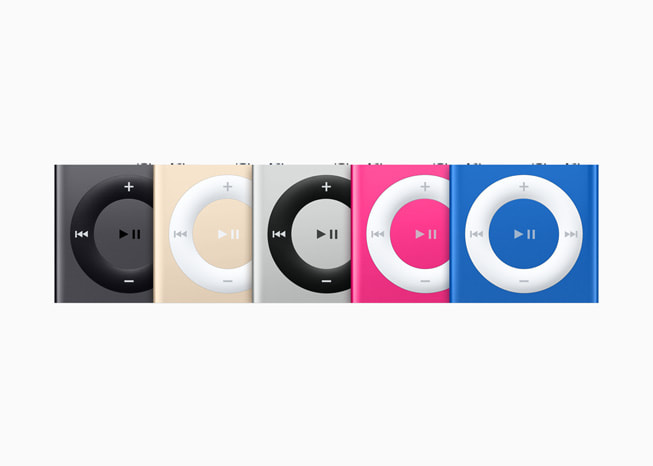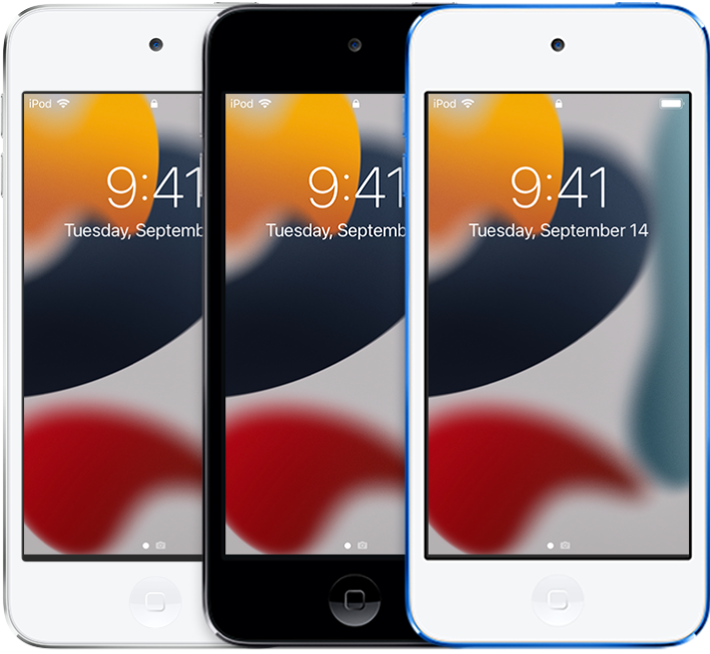The Unlikely Renaissance of a Digital Music Icon
In a world dominated by instant streaming, algorithmic playlists, and the all-in-one convenience of the smartphone, a curious trend is emerging from the annals of tech history. The Apple iPod, a device officially discontinued and long thought to be a relic of a bygone era, is experiencing a remarkable and passionate revival. This isn’t driven by the latest iPhone news or a surprise announcement from Cupertino, but by a growing community of enthusiasts, modders, and digital minimalists. They are breathing new life into classic hardware, transforming aging MP3 players into high-fidelity audio powerhouses that challenge the modern listening experience. This iPod revival news isn’t just about nostalgia; it’s a powerful statement about digital ownership, audio quality, and our complex relationship with technology in the ever-expanding Apple ecosystem news.
The movement goes far beyond simply dusting off an old device. It involves intricate hardware modifications, sophisticated software overhauls, and a shared desire for a more intentional and focused way to engage with music. As we constantly track the latest Apple Vision Pro news and speculate on the future of augmented reality, this grassroots trend reminds us of the enduring appeal of single-purpose devices, tactile interfaces, and the simple joy of a curated, offline music library. This article delves deep into the iPod revival, exploring the “why” behind its resurgence, the technical “how” of modern modifications, and its surprising place alongside today’s most advanced Apple products.
Section 1: Why Now? The Driving Forces Behind the iPod’s Return
The iPod’s comeback isn’t a single-cause phenomenon. It’s a confluence of cultural shifts, technological desires, and a reaction against the very ecosystem the iPod helped create. Understanding these drivers is key to appreciating why devices like the iPod Classic and iPod Mini are once again capturing our attention.
The Quest for Digital Minimalism
The modern smartphone is a marvel of convergence, but it’s also a primary source of distraction. Notifications, emails, social media, and work alerts constantly compete for our attention, even during leisure activities like listening to music. The iPod offers an escape. As a dedicated device, its sole purpose is to play music. There are no pop-ups, no doomscrolling, no temptation to check your messages. This appeals to a growing movement of users seeking to “unplug” and engage in activities more mindfully. While the latest Apple Watch news highlights new ways to stay connected, the iPod revival champions the opposite: the freedom of a single-function device that allows for a deeper, uninterrupted connection with the music itself.
The Audiophile’s Argument: Sound Quality and Ownership
For many, the revival is all about audio fidelity. While streaming services offer convenience, they often rely on lossy compression algorithms (like AAC or MP3) to save bandwidth. A modded iPod, however, can be equipped with massive storage to hold entire libraries of lossless audio files (like FLAC or ALAC). When paired with high-quality wired headphones—bypassing the compression inherent in most Bluetooth connections, even with advanced devices like AirPods Max—the difference in clarity, depth, and dynamic range can be staggering. This movement re-emphasizes the value of owning your music files, a concept that has faded in the age of subscriptions. Unlike a streaming service, your personally ripped or purchased library can’t be altered or removed due to licensing disputes, a recurring theme in digital media news.

Nostalgia and the Tactile Experience
For a generation that grew up with it, the iPod holds a powerful nostalgic appeal. The iconic click wheel is a masterclass in user interface design, offering a satisfying, physical interaction that touchscreens cannot replicate. The rhythmic *click-click-click* of scrolling through albums is a deeply ingrained muscle memory for millions. In an era of sterile glass slabs, the desire for tactile feedback is a powerful motivator. This feedback loop is something designers are still chasing; one could even argue that the haptic precision desired in future devices, perhaps hinted at in Vision Pro wand news or Apple Pencil Vision Pro news, has its roots in the simple, perfect feedback of the iPod’s click wheel.
Section 2: The Anatomy of a Modern iPod: A Technical Breakdown
The heart of the iPod revival news lies in the incredible modding community that has sprung up around these devices. Enthusiasts are not just restoring iPods; they are re-engineering them with modern components, creating devices that far surpass their original specifications. The most popular candidates for these upgrades are the iPod Classic (5th, 6th, and 7th generations) and the iPod Mini, prized for their durable builds and mod-friendly architecture.
Hardware Modifications: Beyond Factory Specs
- Storage Overhaul: The most common and impactful mod is replacing the original, fragile hard disk drive (HDD) with a modern solid-state solution. Using iFlash adapter boards, users can install high-capacity SD or mSATA drives, pushing storage from the original 160GB limit to a staggering 1TB or even 2TB. This transforms the iPod into a true archival-grade music player capable of holding tens of thousands of lossless tracks.
- Battery Upgrades: Original iPod batteries have long since degraded. Modders can install new, higher-capacity batteries that often double or triple the original playback time, offering 50+ hours of continuous music on a single charge.
- Custom Aesthetics: Companies like Elite Obsolete Electronics offer a vast array of custom parts, including transparent faceplates, colored click wheels, and durable metal backplates. This allows users to build a truly personalized device that reflects their style.
- Advanced Mods: For the truly adventurous, more complex mods include adding a Taptic Engine for haptic feedback that mimics the original click wheel’s feel, or even installing a Bluetooth transmitter for wireless convenience with devices like AirPods Pro or a HomePod mini.
Software Liberation with Rockbox
While the hardware mods are impressive, the software side is equally transformative. Rockbox is an open-source firmware that can replace Apple’s default operating system. Installing Rockbox unlocks a host of powerful features:
- Expanded Codec Support: Rockbox plays virtually any audio format imaginable, including the audiophile-favorite FLAC, Ogg Vorbis, and Opus, none of which are natively supported by the original iPod software.
- Deep Customization: Users can change everything from the theme and font to the layout of the “Now Playing” screen. It offers a powerful parametric equalizer, crossfade, and gapless playback settings that go far beyond Apple’s limited options.
- Freedom from iTunes: With Rockbox, the iPod becomes a simple drag-and-drop USB mass storage device. This liberates users from the often-clunky and restrictive iTunes (or modern Music app) synchronization process, a stark contrast to the tightly controlled updates seen in recent iOS updates news. This freedom also aligns with growing user concerns highlighted in Apple privacy news, as the device operates entirely offline without data tracking.
Section 3: The Revived iPod in the Modern Apple Ecosystem
One might assume a 20-year-old device has no place alongside the interconnected web of modern Apple products. However, the revived iPod doesn’t compete with the iPhone or Apple Watch; it complements them by fulfilling a niche that Apple itself has abandoned. It represents a philosophical divergence from the current trajectory of the Apple ecosystem news.
A Companion, Not a Competitor

A modded iPod is for specific use cases. It’s the perfect device for a long flight, a focused work session, or a critical listening session at home. An iPhone user might still rely on their phone for podcasts and casual streaming via Apple Music, but switch to their iPod for their curated, high-resolution music library. It can be the centerpiece of a dedicated home audio setup, feeding a high-end amplifier, or a simple, durable music player for the gym. It even finds a place alongside other Apple accessories; for instance, while you might track a workout with your Apple Watch, the iPod provides the soundtrack without draining your phone’s battery or interrupting you with notifications. This focus on a single, perfected task is a lesson that could inform all areas of tech, from Apple TV marketing news focusing on cinematic experience to the development of intuitive Vision Pro accessories.
Lessons for Apple and the Future of Tech
The iPod revival offers valuable insights for Apple. It demonstrates a clear market demand for:
- User-Repairable and Modifiable Devices: The “right to repair” movement finds a champion in the iPod modding scene. Users want to be able to replace their own batteries and upgrade components.
- High-Fidelity Audio: While Apple has introduced lossless audio to Apple Music, the community’s focus on wired connections and self-hosted files shows a dedicated user base that prioritizes quality above all else. This could influence future AirPods news, perhaps pushing for a truly lossless wireless protocol.
- Dedicated-Use Devices: In a world of convergence, there’s still a powerful appeal for devices that do one thing exceptionally well. The iPod’s success is a testament to the power of focus, a concept that could be applied to anything from a future, more tactile Apple Pencil to a simplified, health-focused device emerging from Apple health news. The act of curating an iPod library can even be seen as a form of creating an audio “vision board,” a more tangible process than the digital mood boards often discussed in iPad vision board news.
Section 4: Getting Started: Tips and Considerations for Your iPod Revival
Intrigued by the prospect of building your own super-iPod? Here are some practical tips and best practices to guide you on your journey.
Best Practices for Aspiring Modders
- Choose the Right Model: The iPod Classic 5th or 5.5th Generation (“iPod Video”) is widely considered the best starting point due to its superior Wolfson digital-to-analog converter (DAC) and relatively easy-to-open case. The iPod Mini (2nd Gen) is also a great, compact option. Later iPod Classics (6th/7th Gen) are much harder to open without causing cosmetic damage.
- Invest in Proper Tools: Don’t try to pry open an iPod with a screwdriver. Purchase a proper set of iSesamo-style opening tools and plastic spudgers to avoid scratching the metal and plastic components.
- Be Patient with Ribbon Cables: The most delicate parts of an iPod are its thin, fragile ribbon cables (for the battery, headphone jack, and click wheel). Work slowly and use fine-tipped tweezers to gently unlatch and reconnect them.
- Source Quality Parts: Don’t skimp on the battery or iFlash adapter. Reputable suppliers provide tested components that ensure reliability and longevity.
Pros and Cons: Is It Worth the Effort?
Pros:
- Unmatched audio quality with a lossless library.
- Incredible storage capacity and battery life.
- A distraction-free listening experience.
- The satisfaction of building and personalizing your own device.
- A tangible connection to and ownership of your music.
Cons:
- Requires an initial investment in a used iPod and parts.
- The modding process can be technically challenging and requires patience.
- Lacks modern features like Wi-Fi, streaming, or voice commands via Siri news.
- Managing a local music library is more hands-on than using a streaming service.
Conclusion: More Than Just a Throwback
The iPod revival is far more than a fleeting trend fueled by nostalgia. It is a meaningful counter-movement in our increasingly connected and subscription-based digital world. It represents a conscious choice to prioritize audio fidelity, digital ownership, and focused engagement over the passive convenience of algorithmic streaming. For thousands of people, building a modded iPod is a rewarding hobby that results in a unique, personalized device that is objectively superior to the original in every technical aspect. As we look toward a future of augmented reality with the Apple Vision Pro and a world of interconnected smart devices, the humble, revived iPod stands as a powerful testament to the enduring appeal of simplicity, tactility, and the pure, uninterrupted joy of music.











